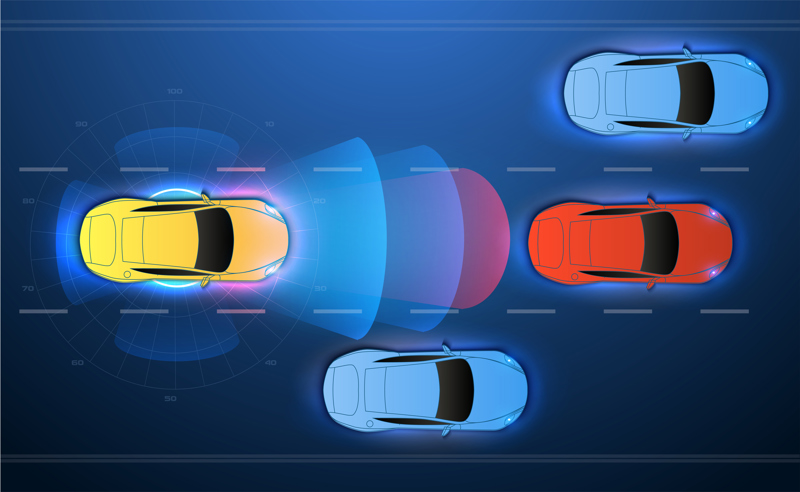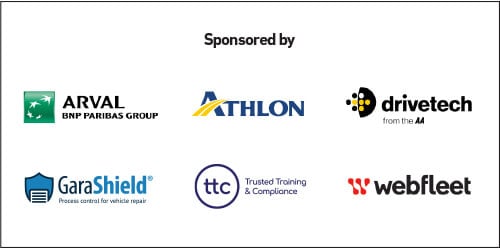This feature was taken from our special Running a Safe Fleet report.

A key part of running a safe fleet is ensuring drivers are operating safe vehicles – and that includes using the best safety technology available where possible, as well as carrying out regular inspection and maintenance.
In the past, technologies such as airbags and crumple zones were designed to minimise injuries to occupants in the event of a collision, but the arrival of new advanced driving assistance systems (ADAS) has changed this.
“Increasingly technological systems are helping us to achieve an even better outcome – avoiding the crash in the first place,” says Nick Reed, founder of Reed Mobility.
Early examples of these include anti-lock brake systems (ABS) and electronic stability control (ESC), both of which activate automatically when vehicle sensors detect loss of control to help the driver avoid the worst outcomes.
These systems are often described as ‘passive’ as they operate in the background, with the driver potentially not aware of their presence until they are needed.
ADAS technologies, which use cameras and advanced sensors to detect more information about the driver and driving environment, are known as ‘active’ as they make more interventions to help reduce collision risk.
These could be through visible or audible alerts to warn the driver of a hazard or through more direct action such as activating the brakes or steering the vehicle.
“Although designed to support safety, they may work in ways that a driver might consider surprising, or even annoying,” says Reed.
“Crucially, these systems may conflict with the driver’s mental model of how their vehicle should operate, as it may be outside their previous experience or training, unlike simpler systems that operate only in emergencies.
“It is therefore important that drivers are aware that such systems are fitted to the vehicle, and where and how they may intervene to support safe driving.”
Switching off
Research by Axa and road safety charity Brake found 41% of drivers had turned off safety features in their cars because they found them annoying, and many respondents said they did not think they would make them safer.
However, the Parliamentary Advisory Council for Transport Safety (PACTS) describes vehicle safety technology as “the single most important means of preventing and mitigating serious injuries in motor vehicle crashes and the most efficient means of reducing deaths and serious injuries in road crashes”.
It estimates 1,700 deaths and 15,000 serious injuries would be saved over 16 years if ADAS technologies were fitted to all new vehicles.
Multiple real-world studies, including a recent report from the Insurance Institute for Highway Safety in the US, show autonomous emergency braking (AEB) technologies can reduce injury claims by as much as 35%. These use sensors to detect hazards around a vehicle and will automatically brake in an emergency if an event is detected, such as pedestrian stepping out in front of the car or a vehicle in front stopping suddenly.
Research has also found Intelligent Speed Assistance (ISA), which uses GPS and cameras to monitor speed limits and either alert a driver to the fact they are speeding or forceably limit their speed, can reduce injury crashes by 29%.
In July 2022, the European Union introduced the Vehicle General Safety Regulation, making certain safety features mandatory for new vehicles. As well as ISA and AEB, these are:
■ Reversing detection with camera or sensors.
■ Attention warning which monitors head and eye movements for signs of driver distraction or drowsiness.
■ Emergency stop signal to alert the driver behind by making brake lights blink if a vehicle brakes sharply.
■ Lane-keeping assist to alert a driver if their car strays too close to lane makers and either turns the steering wheel or applies the brakes on one side of the vehicle to keep it in lane.
■ Event data recorders to gather data about driving behaviour which can be accessed in the event of a collision.
Although these technologies are available on vehicles in the UK, the Government has not signed up to the policy following its exit from the EU, despite pressure from many road safety organisations.
“We urge the Government to look at the evidence, listen to the overwhelming call for safety, and follow Europe’s lead by making these safety features mandatory for all new vehicles in Britain,” says Brake CEO Ross Moorlock.
Name change confusion
To add to the confusion around ADAS, vehicle manufacturers use different names for the technology when fitted to their cars.
For example, Mercedes-Benz calls ISA Speed Limit Pilot, while in a Volvo it is known as Automatic Speed Limiter. Audi refers to AEB as Pre Sense City and Kia calls it Forward Collision Avoidance Assist.
Brake says fleets should make it company policy to acquire vehicles only if they are fitted with certain ADAS technologies.
Murphy Plant, for example, takes a proactive approach by ensuring all small vans it orders are fitted with AEB.
“This incorporated a change of vehicle that was more expensive, but the business agreed this was outweighed by the safety element to our employees,” says Tony Murphy, fleet manager at Murphy Plant.
“The autonomous braking is now standard on all new vehicles procured and this will help in reducing incidents.”
The Euro NCAP (New Car Assessment Programme) safety rating scheme is also often used by fleets to set a minimum standard for vehicles: this awards ratings based on the performance of cars and vans in a variety of crash assessments.
The testing and performance protocols used in Euro NCAP are regularly updated to reflect technological advancements in vehicles to ensure they represent the latest and highest safety standards.
Changes introduced to the protocol last year placed increased emphasis on active safety measures, assessing their potential to prevent collisions and protect vulnerable road users.
The new protocols also raise the bar for the occupant and vulnerable user protection in the event of a crash (passive safety), and comprehensive post-crash rescue information is now essential to achieve a high Euro NCAP safety rating.
The overall score goes up to a maximum five stars, with individual percentage scores for crash protection for adult occupant, child occupant, vulnerable road users and safety assist.
You could be forgiven for thinking that all fleet managers are interested in these days is electric vehicles: how to transition, charging, reimbursements and so on. Such discussion dominates opinion pieces, media column inches, social media discussion and even webinars.
Yes, it’s a juicy topic. No, it’s not what most fleet decision-makers are spending all their time thinking about.
This report on running a safe fleet looks at how to create a safety culture and implement a driver behaviour programme, as well as tackle root causes of accidents, in discussion with fleet leaders and industry experts with the sole purpose of helping you to deliver a robust risk and compliance policy, protecting both your staff and your business.






















Login to comment
Comments
No comments have been made yet.